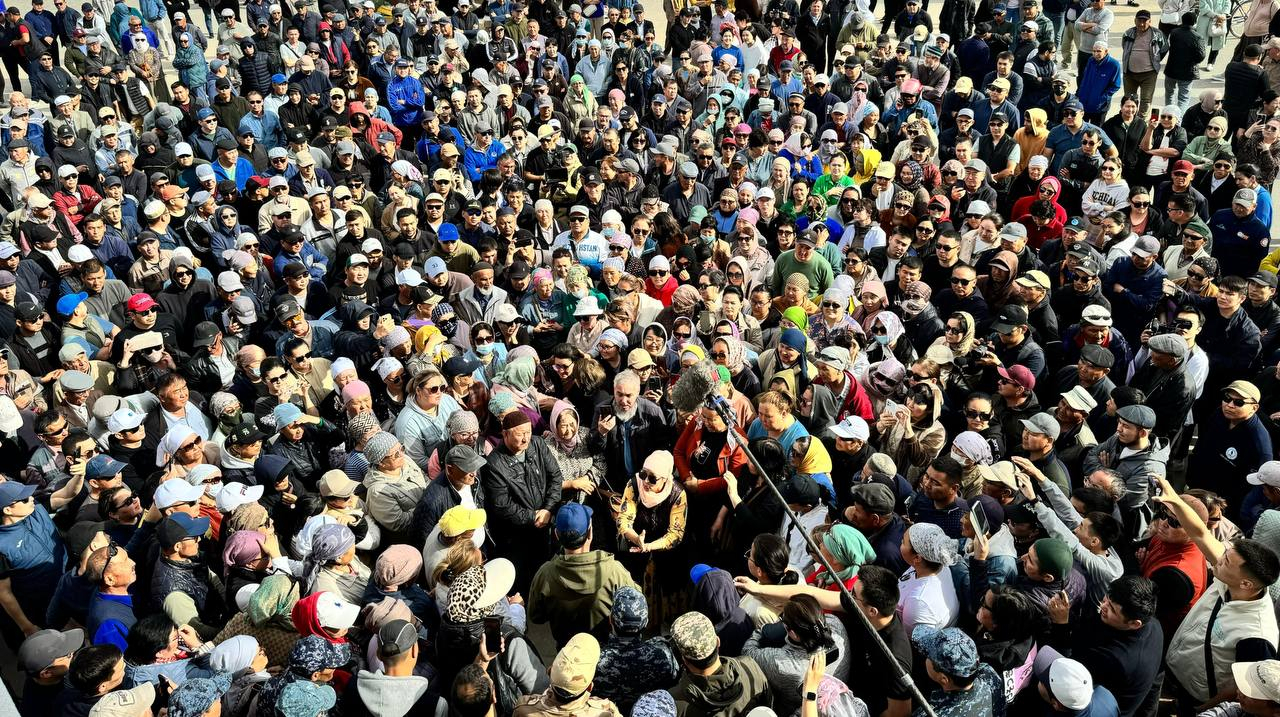- ВКонтакте
- РћРТвЂВВВВВВВВнокласснРСвЂВВВВВВВВРєРСвЂВВВВВВВВ
In early April, devastating floods hit the 60,000-strong city of Kulsary in the western Atyrau region. Half of the population had to be evacuated, and over 3,000 homes and buildings went under water.
In mid-May, people came out in protest at Kulsary’s central square, with flood victims demanding increased compensation for the homes that were damaged, as well as direct financial aid in cash.
Осы мақаланың қазақша нұсқасын оқыңыз.
Читайте этот материал на русском.
What happened? On May 15, several hundred people whose houses were damaged by this spring’s floods gathered in front of the Zhylyoi District Akimat in Kulsary. They ended up spending the night outside the building as representatives from the local and regional government took turns addressing them. Unable to reach an agreement, Kulsary residents continued their protest for six days.
The situation escalated several times after the police blocked the entry of ambulances to the square or after people were barred from pitching tents, or during the speeches of the residents.
On the second day of the protest, internet and mobile communications were cut off in Kulsary. Later, residents of the Atyrau region also complained about internet throttling.
What are the residents demanding? The protesters demanded direct compensation at the rate of 400,000 tenge ($900) per square meter. Deputy regional governor, Zhasulan Bisembiyev, informed them that the administration was ready to pay between 200-240,000 tenge ($450-540) per square meter. The protesters rejected the offer.
The residents of Kulsary are skeptical regarding the quality of the building materials that will be used for flood victim housing. They recalled the situation with Sarykamys village in 2002, which saw some residents relocated to Atyrau. The re-settlement was long and difficult and the new houses turned out to be poorly built.
“We are homeless, living in other people’s houses; we have not been given any solutions, only promises. How long until these houses are built? Let them give the money directly to us,” one of the protesters told the online media Til Kespek Joq.
They also consider 400,000 tenge per square meter to be a fair price, while 200-240,000 would only be enough to build a house, but not enough for basic amenities such as doors, floors, and furniture.
“The 400,000 [tenge] would include both moral and material damage,” another protester told Radio Azattyq.
Information war: State and pro-government media, which had kept silent about the demands of the protesters, began to share the interview of a local resident who reportedly was “not asking for an unrealistic amount of 400,000” and that she would be grateful for a valuation of 240,000 per square meter.
Afterwards, officials of the Atyrau region only published information only about the residents, about 100 according to their calculations, who agreed to the lower valuation.
Causes of the floods: On April 5, water from the Zhem River overflowed and flooded Kulsary. The residents rushed to protect the town and build dams. Earlier, the district government declared that the situation was under control. As a result, half of Kulsary’s population had to evacuate.
Kulsary residents, as well as regional councilman Syrymbek Sarsenbayev, believe that the consequences of the floods could have been less destructive if the illegal dams on the river had been dismantled, the riverbeds cleared, and dredging work carried out.
Zhumabek Karazhanov, governor of the Zhylyoi district, which includes Kulsary, later stated that the breach occurred because the water unexpectedly flowed in great volumes from the southeast.
Поддержите журналистику, которой доверяют.








